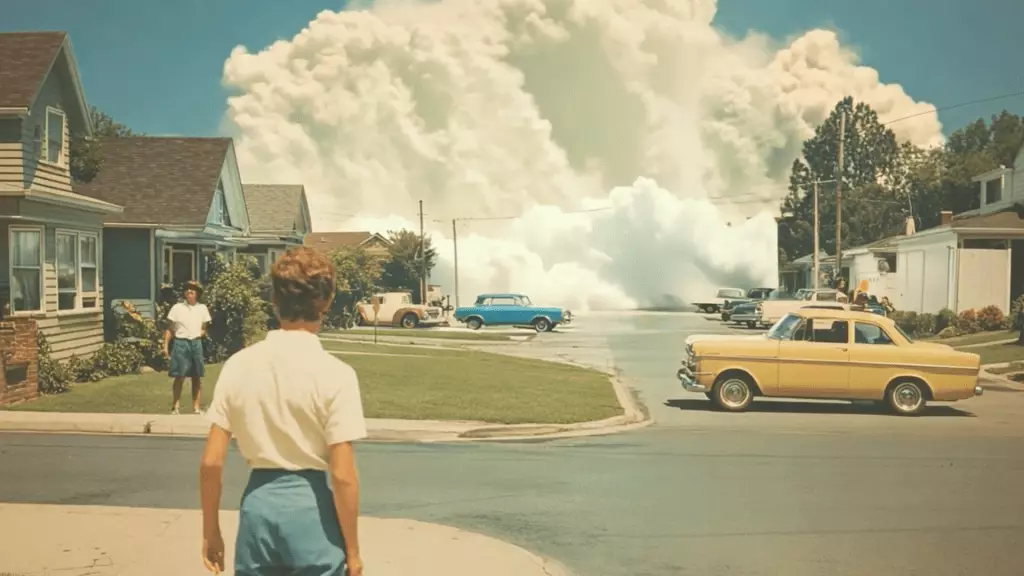The film industry stands on the brink of an exhilarating yet daunting transformation, one marked by the remarkable intersection of artificial intelligence and human creativity. This shift was brought to light at the prestigious AI Film Festival held at New York’s historic Lincoln Center, where emerging creators showcased their innovative narratives in a captivating nine-minute documentary titled *Total Pixel Space*. Engineered by Jacob Adler, this film not only grasped the coveted top honor but also highlighted the growing influence of AI in reshaping storytelling. Such a melding of art and technology is more than just a fad; it’s beginning to alter the fundamental threads of our culture and expressions of creativity.
As Cristóbal Valenzuela, CEO of Runway—the AI powerhouse orchestrating the festival—remarked, we are witnessing a historical juncture. It is remarkable to observe how this once-crazy idea has evolved into a major cultural event within just three years. The exponential rise in submissions from 300 to 6,000 globally hints at an insatiable hunger among creators to explore the untamed landscapes of AI-driven filmmaking. Valenzuela’s assertion that this could be the most significant technological shift of our lifetimes cannot be overstated; it brings with it both promise and peril.
Creativity Without Bounds
In a world where traditional boundaries in filmmaking seem to crumble, the slogans of avant-garde creators resonate loudly. Steven Ellison, also known as Flying Lotus, articulates a vision of art liberated from conventional guidelines, declaring his rejection of “walls and boundaries.” This philosophy thrives in a climate enriched by AI technologies that evoke the “f–k around and find out” method—an almost anarchic exploration that allows filmmakers to experiment without the burden of meticulous, preconceived notions of their work.
The ten finalists at the festival collectively presented a panoply of visual styles, from fleeting two-minute shorts to more ambitious ten-minute narratives. Yet, there is an undeniable thread of surrealism that permeates these films, reflective of the generative process that AI enables. Creativity appears to emerge organically from the chaos of experimentation, leading to dreamlike results that challenge viewers’ expectations and perceptions. This departure from traditional linear storytelling is not merely a curiosity; it signals a fundamental shift in how we define narrative and connect with audiences.
The Dual Edge of Innovation
Yet, while the celebration of AI-infused creativity is rampant, it is imperative to approach this evolution with caution and scrutiny. The implications of AI artistry are profound, raising significant questions about authorship, authenticity, and ethical considerations in the art world. With AI technologies augmenting human creativity, we must ask ourselves how much of a film can be considered truly ‘human’ if its genesis is deeply rooted in algorithms and data analysis.
For instance, the poignant narrative found in *Jailbird*—a film using documentary-style storytelling to explore the beneficial interaction between prisoners and chickens—exemplifies what can be achieved when human insight is melded with AI tools. Yet, the visibility of AI in such narratives should not overshadow the essential human connection that drives storytelling. Is there a risk that as we explore these new technological realms, we might lose touch with the raw, emotional truths that define our experiences?
The Promise of an Inclusive Future
Despite these challenges, the potential of AI to democratize filmmaking is exhilarating. It empowers a diverse range of creators, reducing the barriers that have traditionally kept many talented voices from sharing their stories. One can envision a future burgeoning with narratives that reflect a broader spectrum of human experience, enriched by the spontaneous creativity that AI can inspire. This is not just about technological advancement—it is about reimagining who gets to tell stories and how those stories are told.
The AI Film Festival stands as a testament to this possibility—a celebration of innovative spirits challenging the dominant narratives and inviting viewers to become part of a collective experience. As the world grapples with the implications of AI within the creative landscape, it is vital to forge ahead with optimism, embracing the promise of a more inclusive and diverse filmmaking community. While we must remain vigilant regarding the ethical aspects of this rise, the beauty and potential of human-AI collaboration offer a fascinating lens through which to re-examine our culture and its narratives moving forward.


Leave a Reply